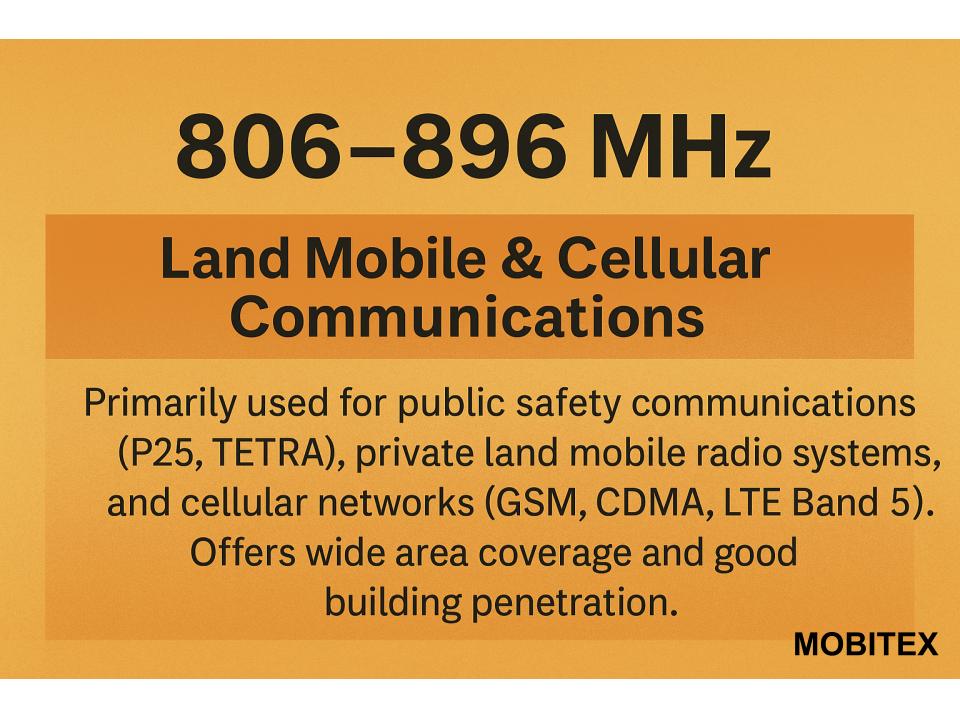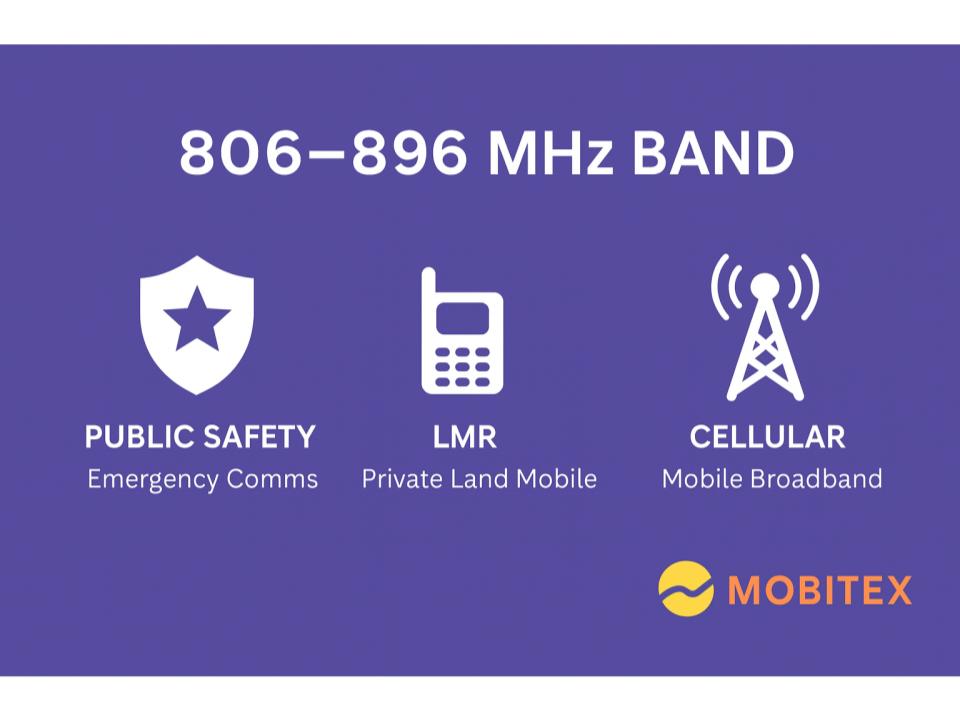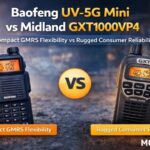📡 The 806–896 MHz band is one of the most important segments of the UHF spectrum. It sits just above the 700 MHz mobile broadband range and just below the 900 MHz ISM/Cellular band.
Globally, this range is reserved for licensed mobile communication systems, particularly public safety, land mobile, and cellular services.
🛰️ Primary Uses of the 806–896 MHz Band
🚓 Public Safety and Emergency Communications
A large portion of this band (especially 806–824 MHz uplink and 851–869 MHz downlink) is allocated to mission-critical communication systems such as:
- P25 networks in North America
- TETRA systems in Europe, Asia, and Africa
These systems support voice and data links for police, fire, ambulance, and disaster response teams. Their propagation characteristics allow for excellent range and in-building penetration, making this spectrum ideal for emergency coverage in both rural and urban areas.
📱 Cellular and Broadband Services
The upper segment of this band, 869–894 MHz, is known as the 850 MHz Cellular Band. It’s used for:
- GSM 850
- CDMA 850
- WCDMA / UMTS Band 5
- LTE Band 5
- 5G NR n5
Mobile operators use these frequencies for wide-area coverage and reliable indoor service. Because of its low frequency, fewer towers are needed to cover large regions, which keeps network deployment cost-effective.

🏭 Private Land Mobile Radio (LMR)
Utility companies, transportation systems, and industrial operators also use parts of this band for private trunked radio. These networks, often running analog FM, DMR, or NXDN, provide dedicated communications where commercial cellular coverage may be unreliable.
🌍 Regional Allocations
| Region | Typical Usage |
|---|---|
| Region 1 (Europe, Africa, Middle East) | Extended GSM 850, LTE Band 5, and Public Safety TETRA systems |
| Region 2 (Americas) | Cellular 850 MHz, Public Safety P25, and Trunked LMR |
| Region 3 (Asia-Pacific) | Mix of CDMA 850, LTE Band 5, and Public Safety networks |
Across all three ITU regions, the primary allocation is Land Mobile Service, with only licensed use permitted.
⚙️ Band Plan Example (Region 2 – FCC / ISED)
| Frequency Range | Allocation |
|---|---|
| 806–824 MHz (uplink) | Public Safety / LMR transmit |
| 851–869 MHz (downlink) | Public Safety / LMR receive |
| 824–849 MHz (uplink) | Cellular user transmit |
| 869–894 MHz (downlink) | Cellular base transmit |
🧩 Relationship to the ISM / SRD Band
Although the 806–896 MHz range is fully licensed, it sits close to the unlicensed ISM/SRD bands:
- 863–870 MHz (Region 1) — ISM / Short-Range Device band used in Europe for LoRa, RFID, Zigbee, and alarm systems
- 902–928 MHz (Region 2) — ISM band used in the Americas for the same purpose
These ISM allocations are intentionally separated from 806–896 MHz to avoid interference with critical public safety and cellular services.
🧭 In Summary
The 806–896 MHz band is primarily used for licensed land mobile and cellular systems, including public safety, private radio, and LTE/5G services.
While unlicensed ISM/SRD devices operate nearby (863–870 MHz in Region 1 and 902–928 MHz in Region 2), the 806–896 MHz range remains strictly reserved for licensed, high-reliability communications that keep both emergency responders and commercial networks connected.

